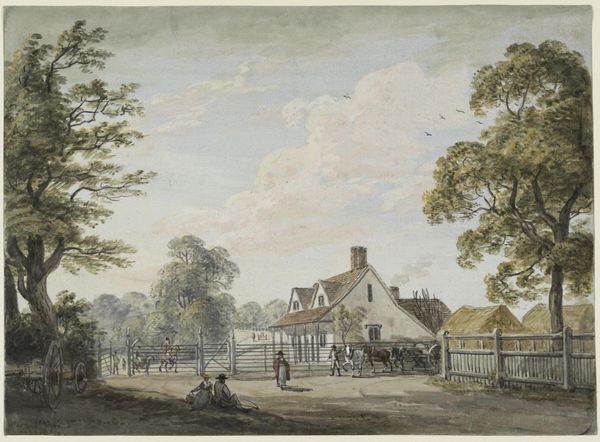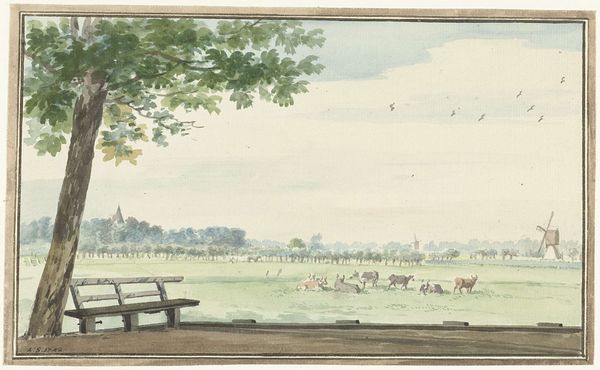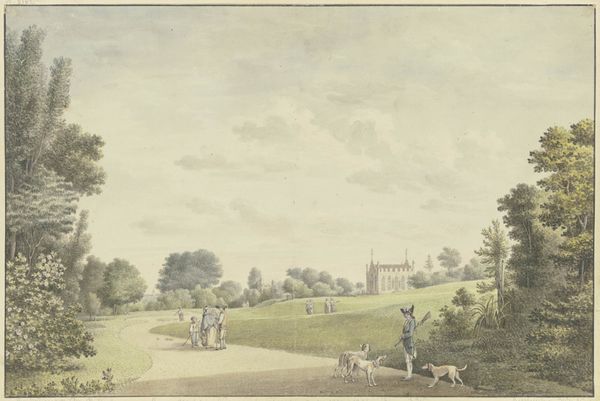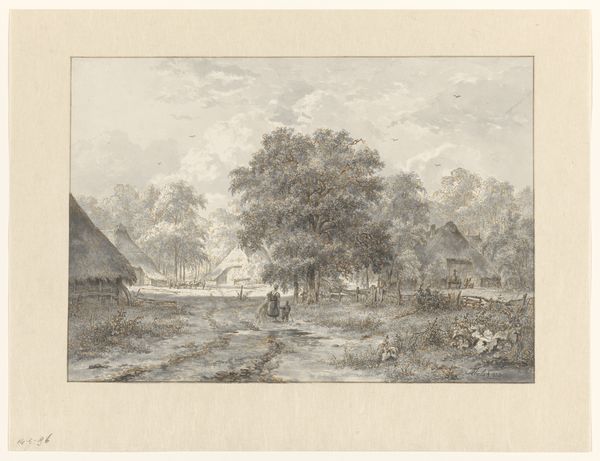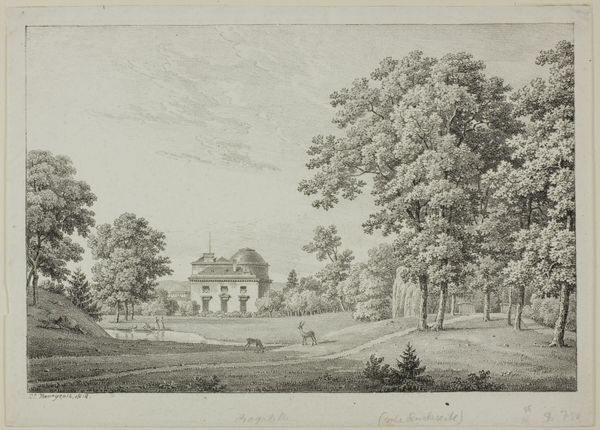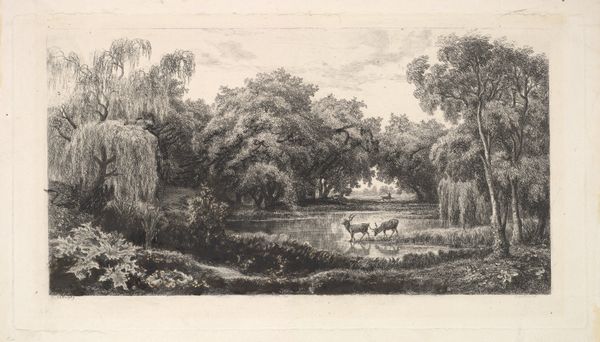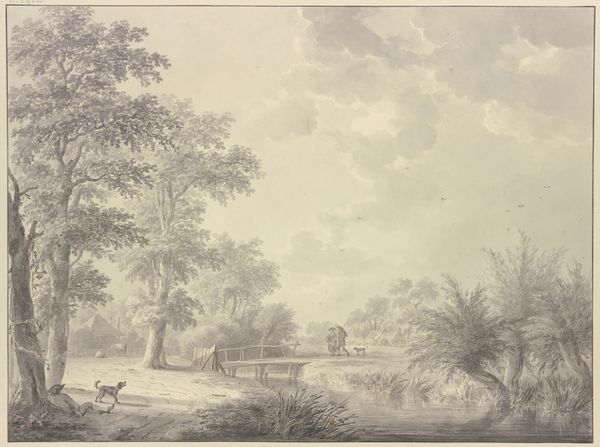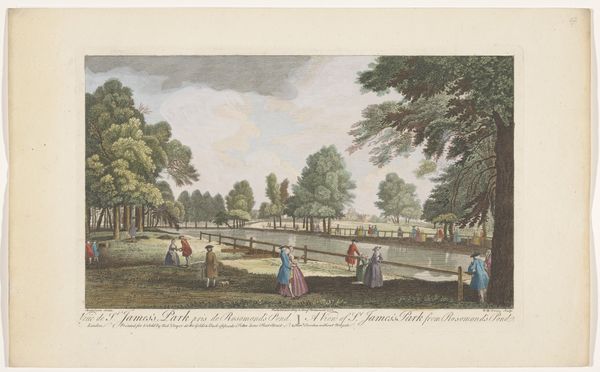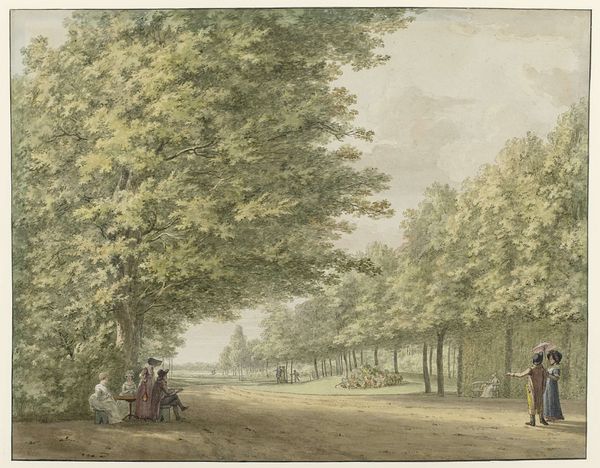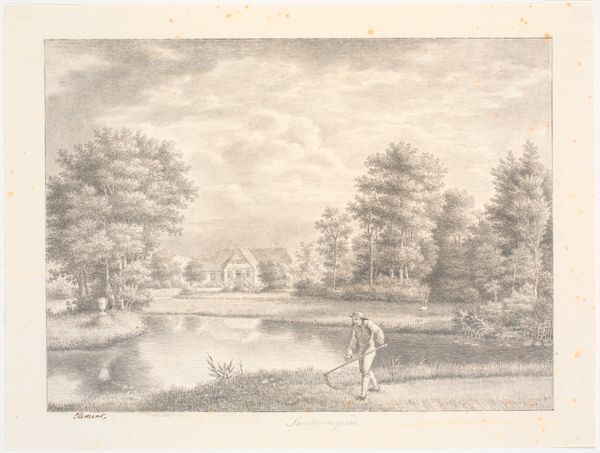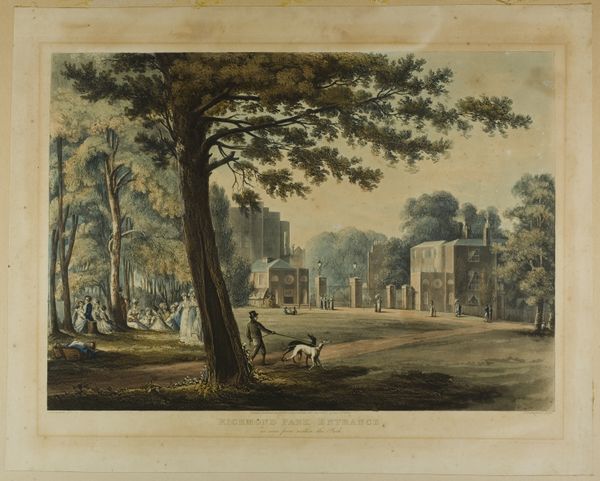
painting, plein-air, watercolor
#
dutch-golden-age
#
painting
#
plein-air
#
landscape
#
oil painting
#
watercolor
#
cityscape
#
watercolour illustration
#
watercolor
#
realism
Dimensions: height 76 cm, width 98 cm, height 490 mm, width 715 mm, height 760 mm, width 980 mm
Copyright: Rijks Museum: Open Domain
Curator: This delicate watercolor on paper is titled "Gezicht te Rijswijk Batavia" which translates to "View of Rijswijk, Batavia". The artist is Charles William Meredith van de Velde, and it dates sometime between 1838 and 1898. What strikes you first about it? Editor: It's like stepping into a hazy dream of colonial life. The pastel shades, the horses...there's something quite nostalgic, almost romantic about it. The artist has achieved an amazing depth and feeling. Curator: Van de Velde was part of a wave of European artists drawn to documenting colonial life and landscapes. Here we see the Dutch colonial architecture alongside local flora, and there's a distinct arrangement of laborers and the well-to-do at leisure. How does this interplay speak to you? Editor: It does raise questions. On one level, there’s the sheer technical skill, the way he captures the light filtering through the clouds...But you can’t ignore that underlying tension, this display of power in a rendered image, so seemingly serene, right? It's a reminder of how landscape painting often served colonial agendas, portraying idealized visions that often obscured darker realities of exploitation and extraction. The artist is framing this life, literally, creating an ideal for consumption, and what does that entail? Curator: Exactly. This image highlights the layers of complexity inherent in art created within a colonial context, and considering it as both artistic creation and social artifact pushes us to reflect on labor practices embedded in artistic output and cultural value. The use of plein-air technique allows Van de Velde to accurately render light and atmosphere, making this view immediate and real. Editor: Real, yes, but filtered through a particular gaze. Looking at the paper and the pigments used brings up so many things, the trade routes, and the whole system which made it possible to have watercolor paints in Batavia! Makes me wonder if this very watercolour embodies both the beauty and the deep-seated inequities of its time. Curator: A perfect way to think about how art and history, vision and practice come together to reveal complex meanings. Editor: Indeed. I look at it now, and it is not just a pretty picture but a potent little historical essay.
Comments
No comments
Be the first to comment and join the conversation on the ultimate creative platform.
